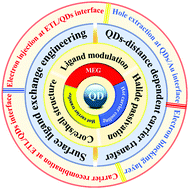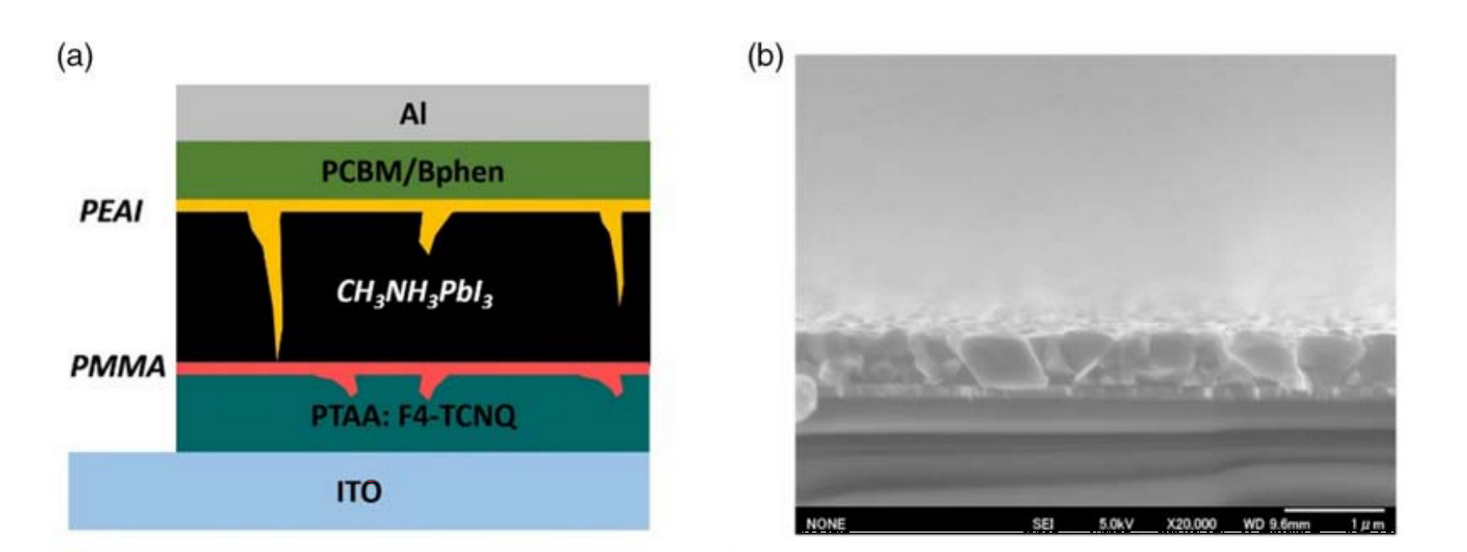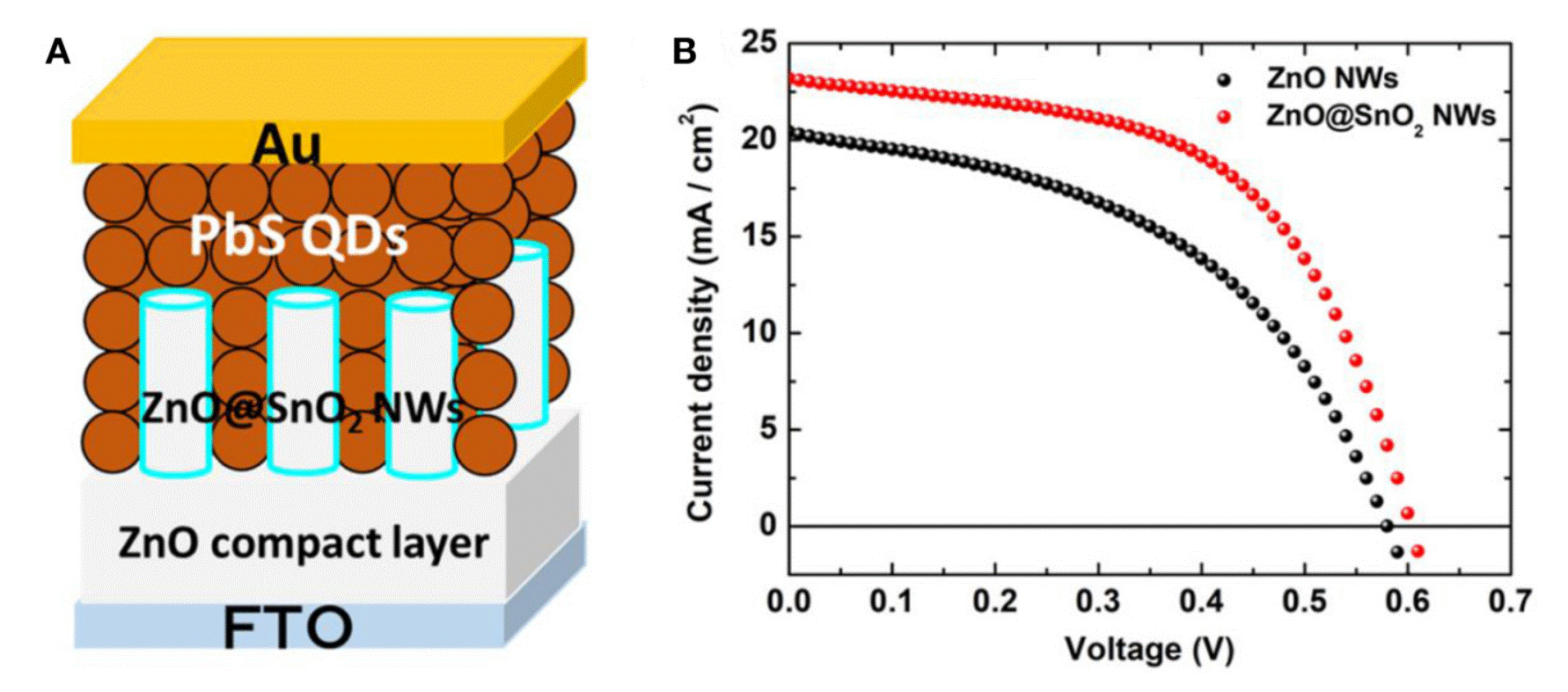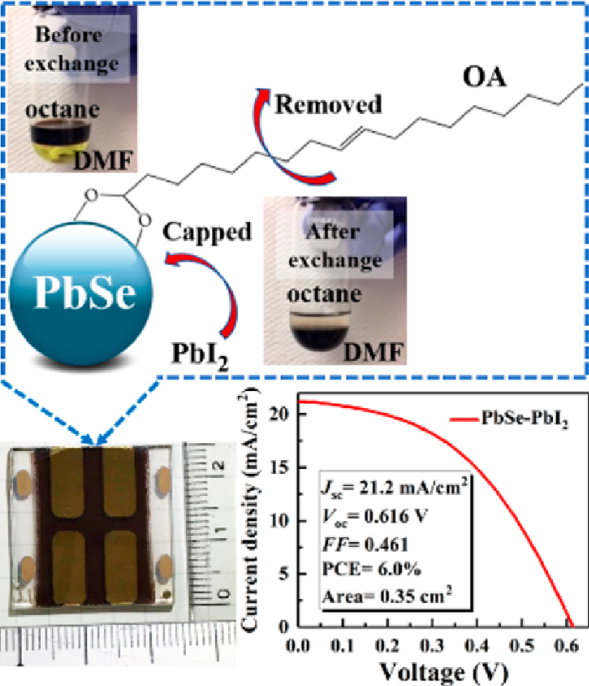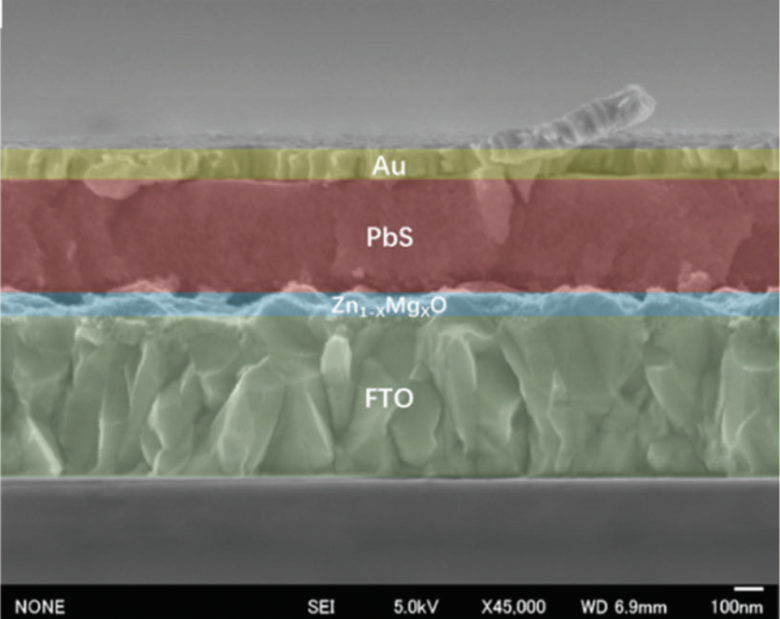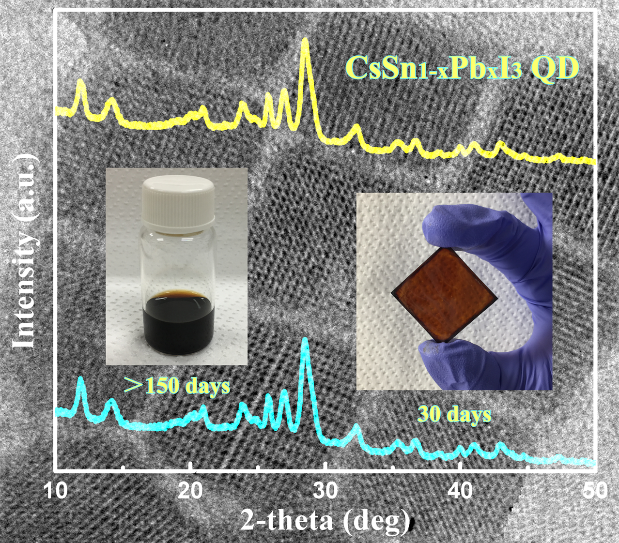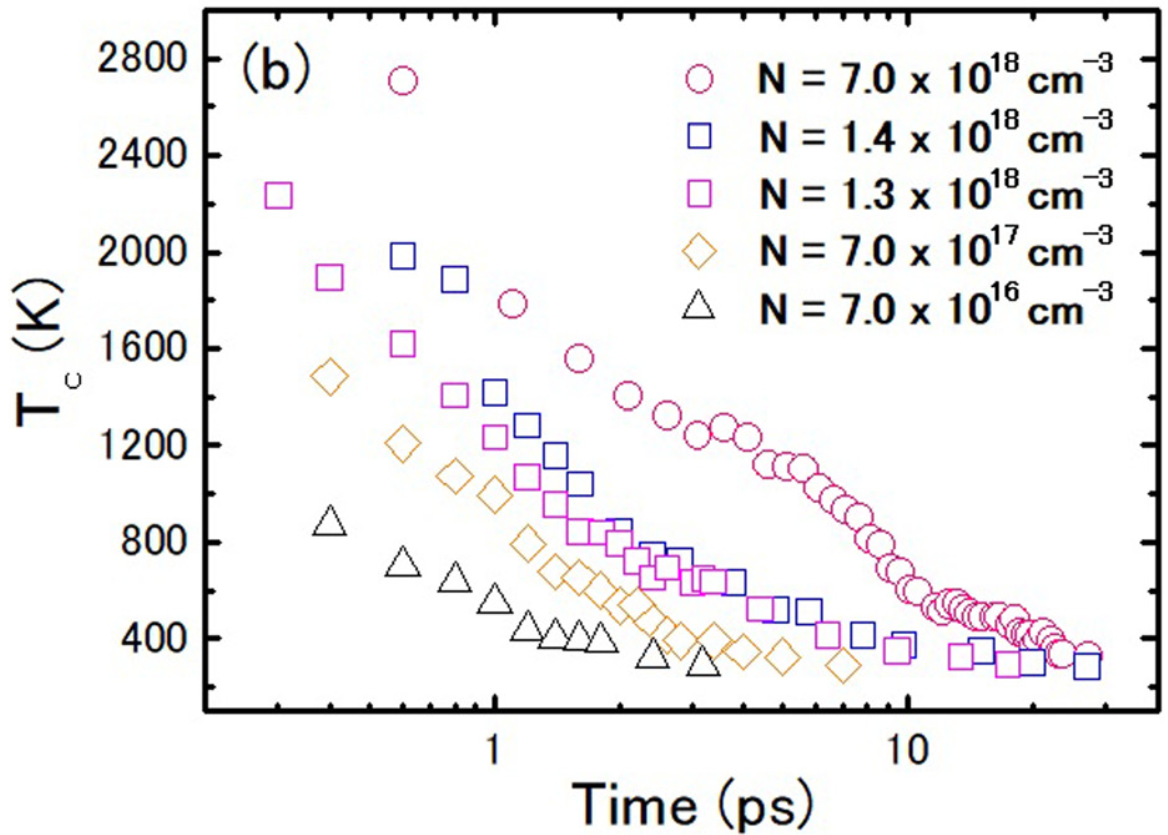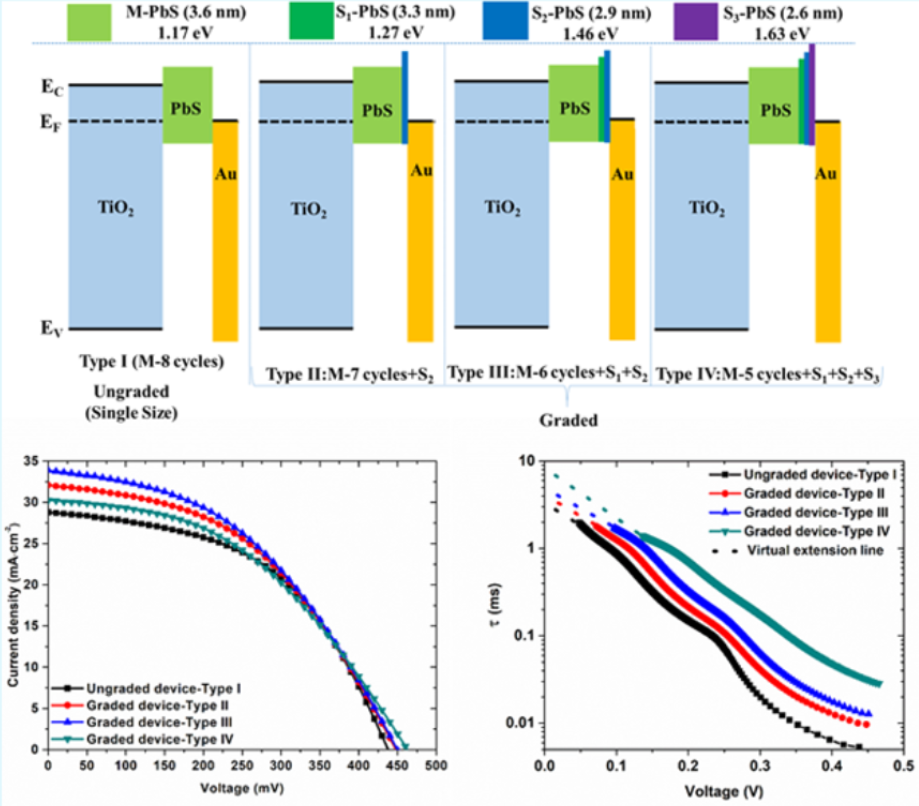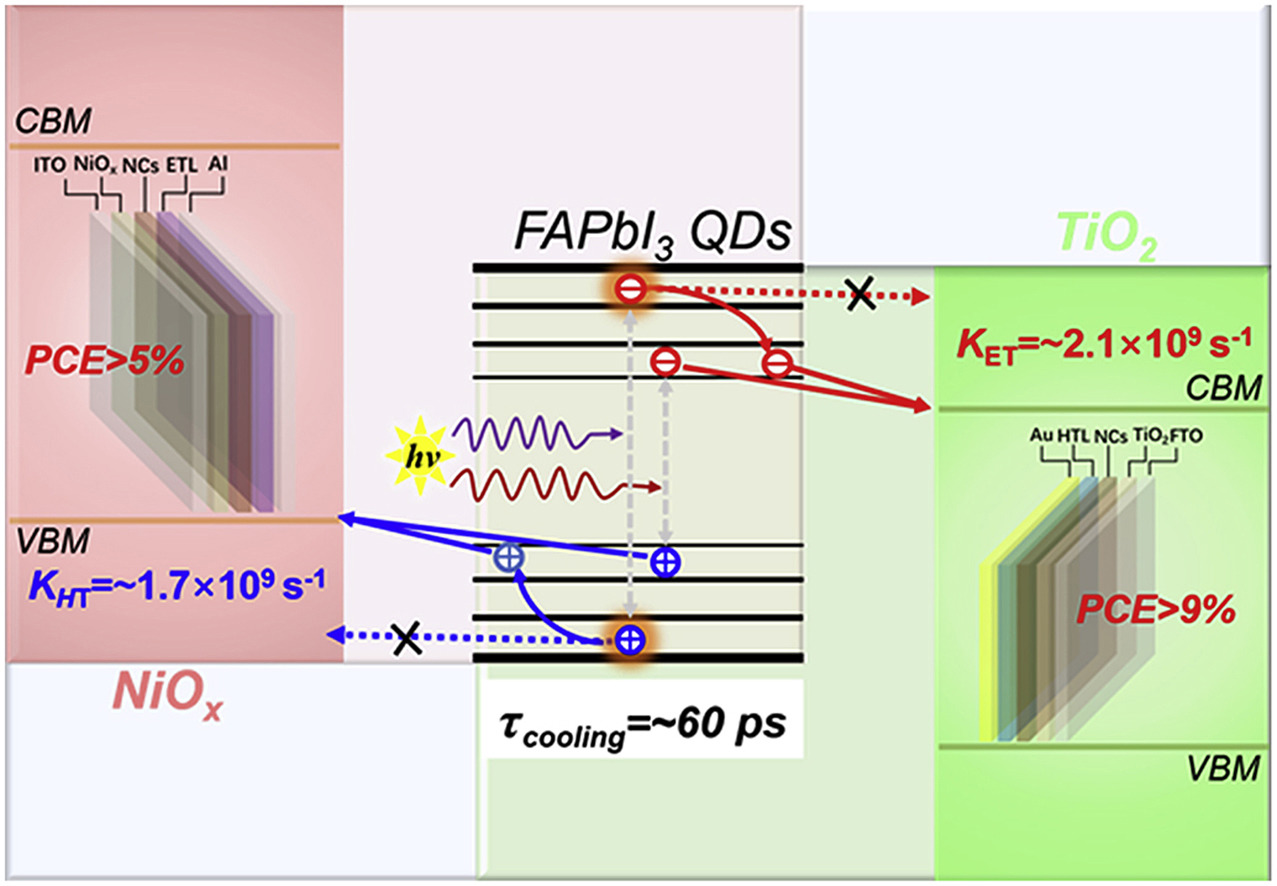
Fig. Schematic illustration of hot and cold electron and hole relaxation
and transfer at the FAPbI3 QDs/TiO2 and FAPbI3 QDs/NiOx heterojunctions.
|
Photoexcited hot and cold electron and hole dynamics at FAPbI3 perovskite
quantum dots/metal oxide heterojunctions used for stable perovskite quantum
dot solar cells
|
Highly luminescent formamidinium lead iodide (FAPbI3) quantum dots (QDs)
exhibit high stability and narrowest bandgap energy among lead halide perovskites,
thus they have become one of the most promising materials for the development
of perovskite QD-based light-harvesting and near infrared-emitting devices.
However, little is known thus far about photoexcited carrier dynamics at
the interface between FAPbI3 QDs and charge transport layers, which is
very important for both fundamental studies and applications of the QD/charge
transport layer heterojunctions. Here, we systematically investigate both
hot and cold photoexcited carrier (electron and hole) dynamics including
relaxation and transfer at the heterojunction interfaces between FAPbI3
QDs and two kinds of well used charge acceptors, i.e., TiO2 and NiOx. We
find that (i) the hot carriers in the FAPbI3 QDs are cooled to cold carriers
with a cooling rate in the order of 1011 s−1, and (ii) the cold-electron
and -hole injection rates are size dependent and are 2.01–2.29 × 109 s−1
and 1.55–1.96 × 109 s−1 at the two types of FAPbI3 QD/MO (metal oxide)
heterojunctions, respectively, which are in good agreements with Marcus
theory of charge transfer. In addition, the photoexcited carrier injection
efficiency at the two heterojunctions is found to be as high as over 99%,
which is the most important key for achieving high photovoltaic performance
of the FAPbI3 QD solar cells (QDSCs). Prototypes of the two types of heterojunction-based
QDSCs, i.e., normal-structure solar cells based on FAPbI3 QD/TiO2 and inverted-structure
solar cells based on FAPbI3 QD/NiOx, were developed and the power conversion
efficiencies of more than 9% and 5% were obtained, respectively. Moreover,
the photovoltaic performance showed a higher storage stability over 100
days. The photovoltaic performance would be improved largely by optimization
of each parts in the QDSCs. Our results shed light on perovskite QD-based
optoelectronic devices.
[See more]
Naoki Nakazawa, Yaohong Zhang, Feng Liu, Chao Ding, Kanae Hori, Taro Toyoda,
Yingfang Yao, Yong Zhou, Shuzi Hayase, Ruixiang Wang, Zhigang Zoub and
Qing Shen |
